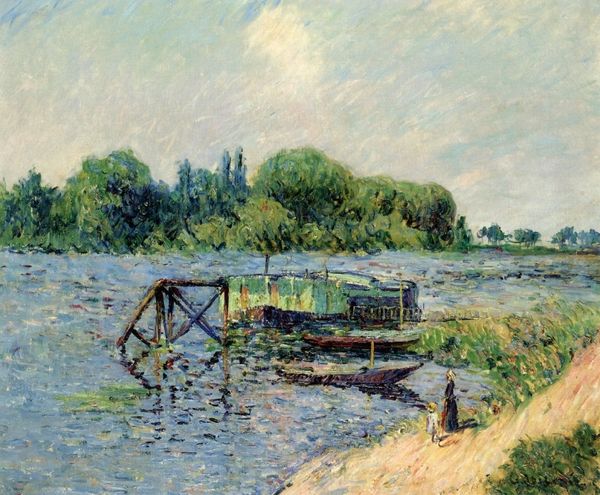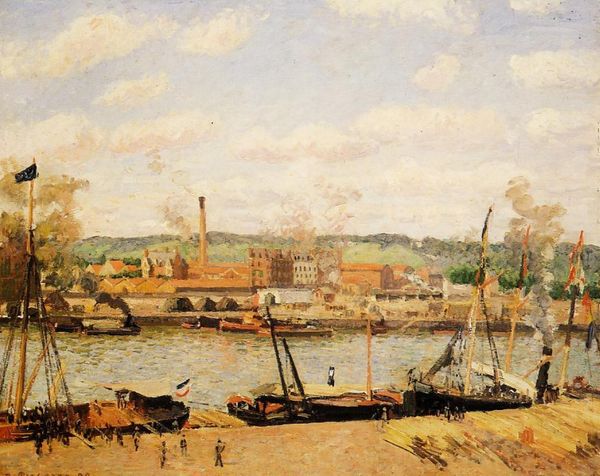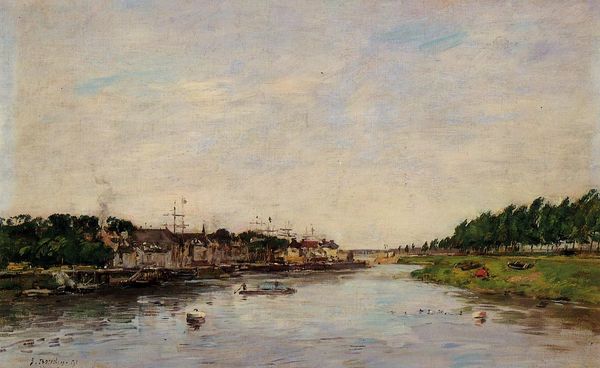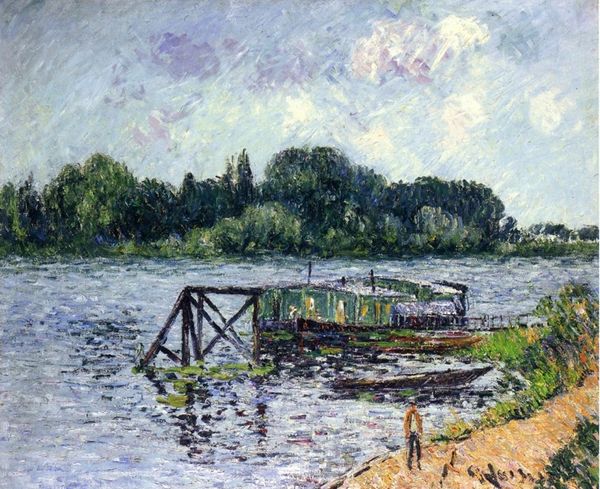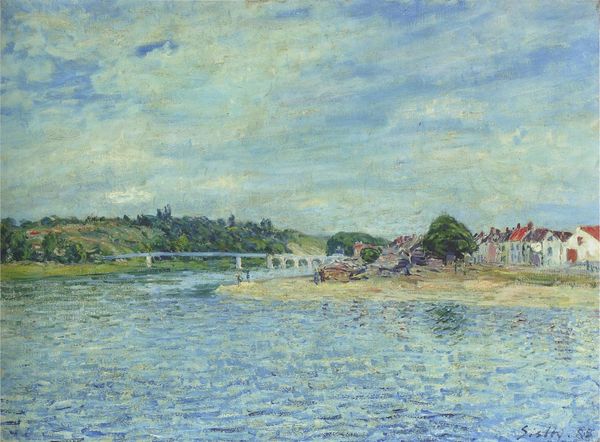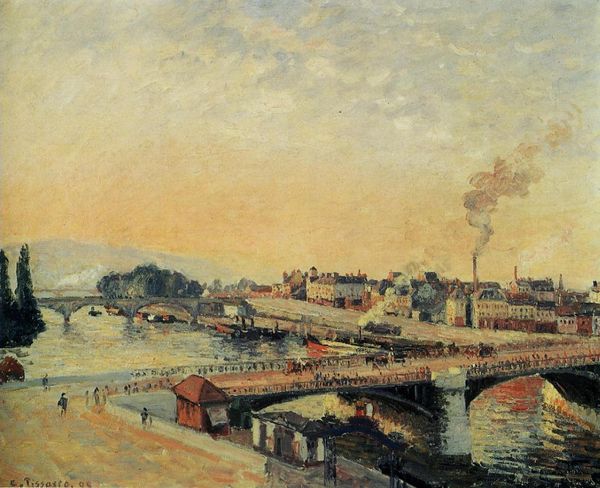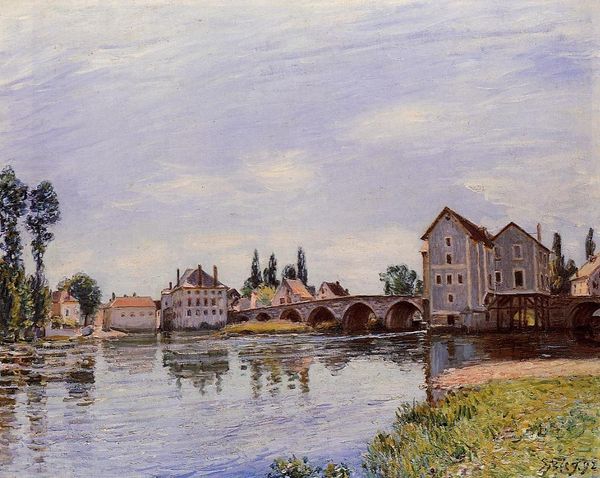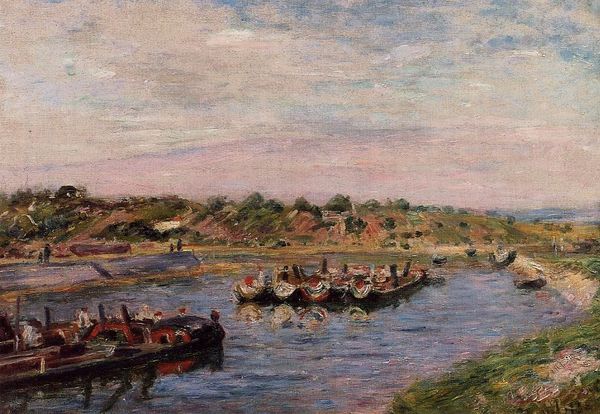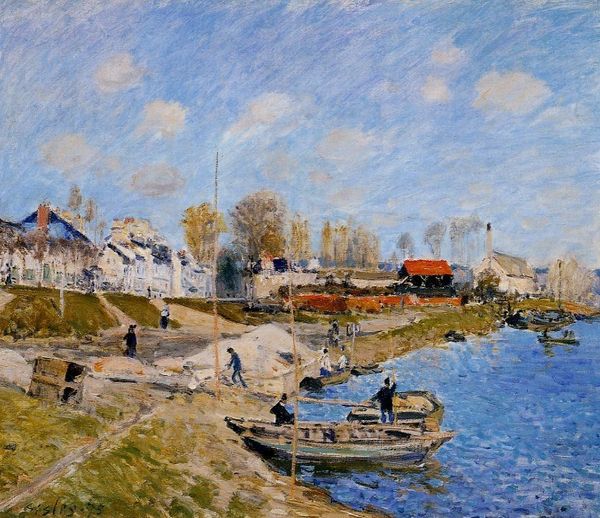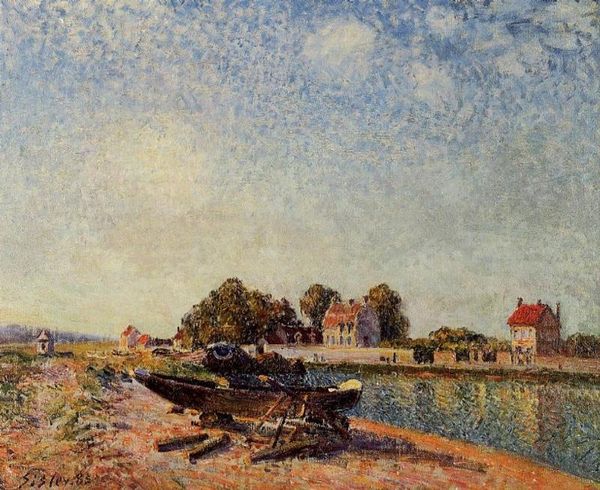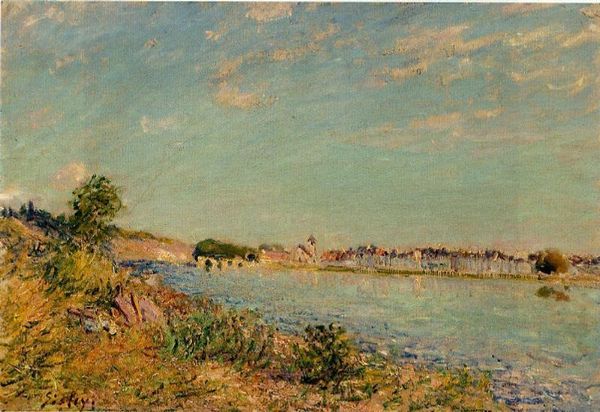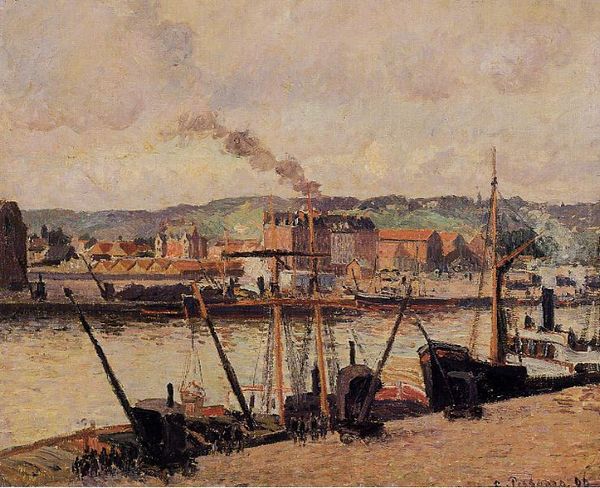
Copyright: Public domain
Curator: Looking at Joseph DeCamp’s “Jetty at Low Tide (The Water Pier)” from 1901, painted with oils in an impressionistic style, I'm struck by how ordinary it is, and yet…it pulls me in. Editor: Yes, ordinary—almost forlorn. The muted colors create a somber, reflective mood. The broken-down pier suggests neglect, maybe even a disappearing way of life for those who lived there. What else can you tell us about its cultural context? Curator: Well, DeCamp was part of the Boston School of painting. The pier can be seen as a motif for liminality—a transition, a connection between solid land and the fluidity of the water representing unconsciousness. It evokes a powerful symbolic threshold. The choice of a gray, overcast day also reduces the starkness, enveloping everything in muted tones and suggesting nostalgia. Editor: And who benefits, I wonder, from romanticizing these kinds of images? Was this a community undergoing socioeconomic strain at the time of its depiction? Curator: It's likely, though his goal was probably not direct social commentary. But there’s an implied narrative— the human touch in constructing the jetty and, conversely, the erosive power of nature. Also, there is an impasto technique here, but the lack of vibrancy keeps pulling me to melancholia. Editor: Right, the heavy impasto actually adds to that somberness. And that jetty seems deliberately placed to evoke decay rather than resilience. So maybe that tension – decay against resilience – becomes more pertinent. What histories are hidden in its making? Curator: DeCamp seems less interested in specific local narratives and more engaged in painting pure aesthetic form; in other words, this piece is an invitation to consider the ephemeral. Editor: Perhaps, but the reality remains. It captures the anxiety of urban-industrial transformations. While it may be pretty, it is the pretty veneer of late capitalism where decay sits just beneath. It would be anachronistic to ignore the role these landscapes play in creating memoryscapes for people. Curator: Fair enough. I see your point that its melancholic atmosphere isn't detached. Even unintentionally, its aesthetic choices tap into historical feelings of change, loss, but also perhaps the lingering power of natural forms. Editor: Exactly. By seeing the aesthetic through a broader historical and social lens, the images are less static; their significance resides in their interpretation as reminders of the social milieu they represent. Curator: That's a wonderful reminder to be cognizant of our responsibility as viewers when decoding symbols in any artwork. Thanks. Editor: Likewise! Always important to not strip them away from their embedded realities.
Comments
No comments
Be the first to comment and join the conversation on the ultimate creative platform.
